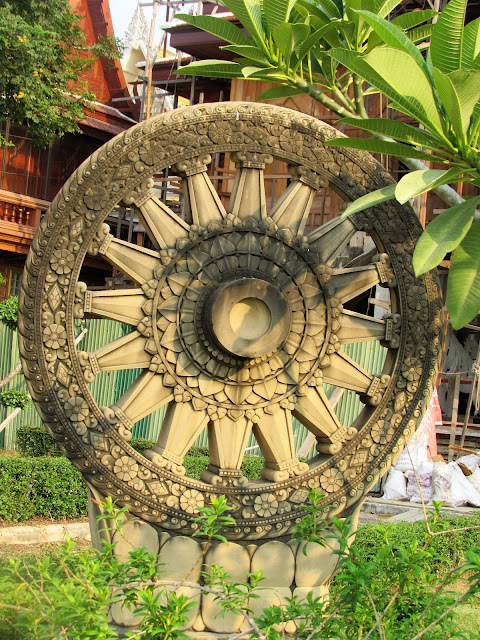Transparency: This post is being written in 2020 as we did not have a blog in 2016. I am using stay at home time to flatten the curve of the global pandemic Covid-19 to organize photos from this trip into a post. Memories may not be exact.
Ayutthaya, UNESCO World Heritage site is an island at the confluence of three rivers. This geographical position helped it become the trading capital of Asia and quite possibly of the world. Built in the 14th. century it had a population of one million inhabitants by the 1700s. As of 2017, the population was 53,300.
Ayutthaya was destroyed in the 18th. century by the Burmese and much has since been reconstructed.
There are nine or ten temples on the island and another six or so off the island. Entrance to the historical park on the island is free although some of the temples charge a very small fee ranging from 20 to 50 THB to go in.
The island itself is beautiful
A couple of bridges on the island:
Storks of the island:
Some of the Temples on the Island
We are out for a stroll one day and spy this sign on the gate of a private home. With Paul's family history of wooden boat building on the west coast of Canada, this stop is a must!
A tiny, quite elderly Thai woman comes to the gate when we ring the bell. She says that we can roam their property at will and apologizes that her husband is not well enough to come out. We learn that her husband was a builder of traditional wood Thai boats for years, then became a professor teaching others to build boats. This is his life's work and they have turned it into their own private museum. There is no entry fee.
There are boats and boat models everywhere sometimes stacked one on the other. We learn that a boat was often constructed particularly for how it was to be used. For example, the rice seller had different needs than the vegetable or the fish seller.
These little 'to scale' models illustrate the purposes that boats were put to.
You can click on any photo to enlarge it.
Below are full-size boats. Looking closely you will see that no two are the same.
This amazing boat in his back yard is known as a Scorpion-Tailed boat. This boat was used to transport the King's cargo. A professor in Chiang Mai built one in modern times and used it to give tourists a ride on the Ping River. At the age of 70 years (in 2017) he retired and no one took over. There is however a museum of Scorpion-Tailed boats in Chiang Mai so that their history will not be forgotten.
With a side view, the camera could not capture the entire boat
Here is a specialized boat indeed:
Just another boat in the yard.
After we look at everything we are invited into the home to meet the boat-builder/professor. He is delighted that we are here and interested in his museum. His greatest fear is what will happen to the collection when he dies. Neither of his sons is interested. I hope they were able to develop a plan to save it.
This man has been granted several awards by the King over the years:
His house is crammed with so many model boats and ships that its really impossible to take a photo of them. Below are just two:
Random Photos from the Boat Museum:
Out bicycling one day we come across the Wat Chi Chian Sai temple which houses the Phra Mongkhon Bophit Buddha, otherwise known as "Buddha of the Holy & Supremely Auspicious Reverence". This statue was sculpted in the year 1538.
 |
| Wat Chi Chiang Sai |
 |
| Phra Mongkhon Bophit |
Next, we decide to do a sunset cruise to visit three temples that are off the island:
Temples on the riverbank
A few of the many boats we pass on the river. The barge/dredger bottom left photo is so large, this is only about a third of it:
On the grounds of some temples that we stop at:
Temples often have animals, real or mythical such as dragons, monkeys, pigs, horses, tigers, snakes, rooster, and more associated with them either in statuary or in some cases real animals. These are three evident this evening.
After all, this sight-seeing it's off to the island of Koh Sammet for some R & R beach time.
Random Photos














































No comments:
Post a Comment